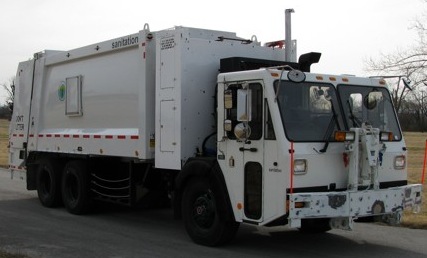 |
|---|
|
Crane Carrier refuse truck.
|
TransPower is developing electric drive solutions for refuse and recycling trucks, which will eliminate the dependence of these vehicles on fossil fuels and their emissions, while helping to mitigate the horrendous noise we commonly associate with garbage trucks. Major components of the TransPower electric drive system are currently being demonstrated on Class 8 port drayage trucks, and can easily be adapted to even the largest refuse and recycling trucks.
Ten years ago, the environmental group INFORM estimated that there were 179,000 refuse collection and recycling trucks operating in the U.S. This figure includes 136,000 garbage trucks which consume more than 1 billion gallons of fuel per year. A typical truck that travels 25,000 miles each year would save about $25,000 in fuel and maintenance costs every year, if converted to run on battery-electric propulsion. This is based on a diesel fuel price of $4/gallon, and is after deducting the cost of the electricity used to recharge the vehicle’s batteries. As fuel prices continue their upward spiral, the savings from converting refuse and recycling trucks to electric drive will continue to increase.
In the near term, larger refuse trucks will require either frequent battery recharging, or some degree of “hybridization” to meet their daily operating range requirements. Trucks capable of stopping for a fast (1-2 hour) recharge every 20-30 miles can complete their duty cycles with batteries alone. Where this is impractical, operating range can be extended using a variety of fuel-based power conversion devices, including small internal combustion engines, microturbines, and fuel cells. Emissions can be kept at zero or near-zero levels by operating such engines with hydrogen fuel. In the longer term, as battery costs decline, refuse trucks relying on just batteries will be able to achieve greater operating range, eventually eliminating the need for engines and on-board fuel in a majority of refuse truck applications.
